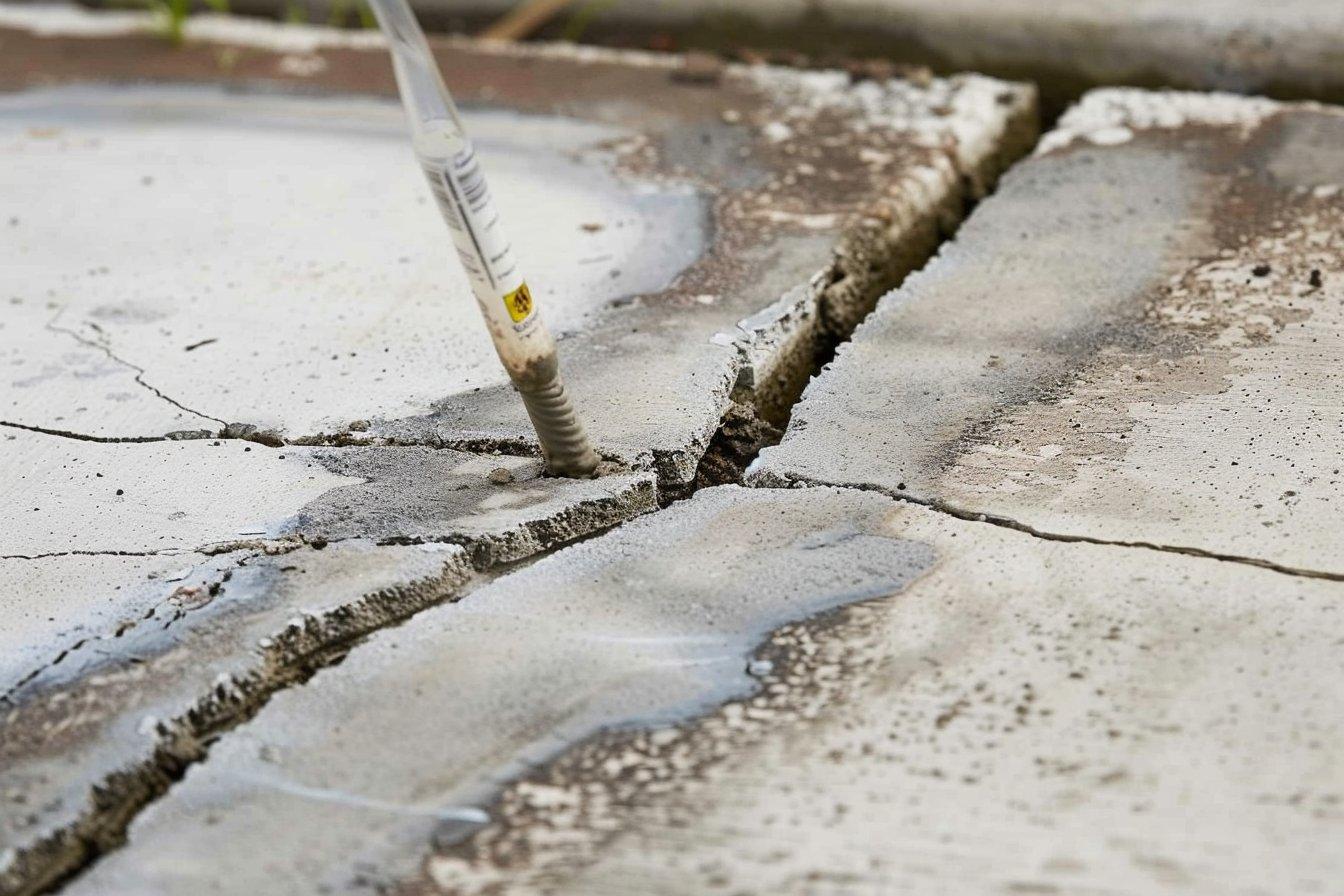Understanding Causes and Solutions for Structural Damage
Cracks in concrete can compromise both the structural integrity and aesthetic appeal of buildings and infrastructure. From hairline fractures to major structural damage, understanding the science behind concrete deterioration and implementing appropriate repair techniques is essential for maintaining safe, durable structures. This comprehensive guide explores the causes of concrete cracks and the most effective repair solutions available today.

Concrete is one of the most widely used construction materials worldwide, valued for its durability and strength. However, even the best concrete installations can develop cracks over time due to various environmental and structural factors. These cracks not only affect the appearance of concrete surfaces but can also lead to more serious structural issues if left unaddressed. Fortunately, advances in repair technology have made it possible to effectively address different types of concrete damage, from minor cosmetic cracks to major structural concerns.
Understanding the Root Causes of Concrete Cracks
Concrete cracks don’t appear randomly—they develop due to specific underlying factors that put stress on the material. The most common cause is shrinkage during the curing process, when water evaporates from the concrete mixture. This natural process creates tension that can lead to cracking, particularly if proper control joints weren’t installed. Temperature fluctuations also play a significant role, as concrete expands in hot weather and contracts in cold conditions, creating stress that manifests as cracks.
Soil settlement beneath concrete structures is another major contributor to cracking. When the ground underneath shifts or settles unevenly, it creates pressure points that force the concrete to crack. Similarly, excessive weight or load beyond what the concrete was designed to bear can cause structural cracks. In regions with freeze-thaw cycles, water that penetrates concrete can freeze and expand, creating internal pressure that results in cracks. Understanding these root causes is crucial for determining the appropriate repair approach and preventing future damage.
Effective Methods for Repairing Concrete Cracks
The approach to concrete crack repair depends largely on the crack’s width, depth, and underlying cause. For hairline cracks less than 1/8 inch wide, patching compounds or crack fillers provide an effective solution. These products can be applied with minimal equipment and offer good cosmetic results. For slightly larger cracks up to 1/4 inch wide, caulk or latex crack repair products work well, providing some flexibility to accommodate minor movement.
For cracks wider than 1/4 inch, more substantial repair methods are necessary. Resurfacing can address multiple surface cracks simultaneously by applying a new layer of specialized concrete over the damaged area. For deeper structural cracks, injection repair using specialized grouts provides strength and prevents water infiltration. The key to successful repair lies in proper preparation—cleaning the crack thoroughly, removing loose material, and following manufacturer instructions for the specific repair product being used. In cases of extensive damage, consulting with a structural engineer before attempting repairs is strongly recommended to ensure the underlying issues are properly addressed.
Advanced Techniques: Epoxy & Polyurethane Crack Repair
For structural cracks or situations requiring high-strength repairs, epoxy and polyurethane injection systems represent the gold standard in concrete crack repair. Epoxy injection creates an extremely strong bond that can actually restore the structural integrity of cracked concrete. The process involves installing injection ports along the crack, sealing the surface with epoxy paste, and then injecting liquid epoxy under pressure to fill the entire crack from bottom to top. Once cured, epoxy-repaired concrete often becomes stronger at the repair site than the surrounding material.
Polyurethane injection systems, while similar in application, serve a different purpose. These flexible foams expand upon injection and are ideal for cracks that continue to experience movement. They’re particularly valuable for repairing foundation cracks where water infiltration is a concern. The expanding nature of polyurethane allows it to fill voids completely and create a watertight seal, even in actively leaking cracks. Both epoxy and polyurethane repairs require specialized equipment and expertise, making them better suited for professional application rather than DIY repair.
Practical Solutions for Surface & Structural Concrete Damage
Surface damage to concrete often requires different approaches than structural cracks. For spalling (flaking or chipping of the surface), patching compounds specifically designed for vertical or horizontal applications provide good results. These can be feathered at the edges to blend with the existing surface. For more extensive surface damage, resurfacing products can create a fresh, uniform appearance across the entire affected area.
Structural damage requires more comprehensive solutions. Steel reinforcement may be necessary for cracks that compromise the load-bearing capacity of concrete elements. This involves exposing the damaged area, installing new rebar or mesh, and applying specialized structural repair mortars. For foundation cracks, carbon fiber straps or staples can provide additional reinforcement after the crack itself has been repaired. In all cases of structural damage, proper diagnosis of the underlying cause is essential—repairing the symptom without addressing the cause will only lead to recurring problems and potentially more serious structural issues.
The Future of Concrete Repair: Innovations & Sustainability
The repair industry continues to evolve with innovations focused on durability and sustainability. Self-healing concrete technologies represent one of the most promising developments, incorporating bacteria or special polymers that activate when cracks form, automatically filling them without human intervention. These bio-concrete solutions could dramatically extend the lifespan of concrete structures while reducing maintenance costs.
Nanotechnology is also making inroads in concrete repair, with nano-silica and other nanoparticles being incorporated into repair materials to increase strength and reduce permeability. Carbon fiber reinforced polymers (CFRP) provide non-invasive structural strengthening options that are particularly valuable for historic structures where traditional reinforcement methods might be too disruptive. Additionally, environmentally friendly repair materials made from recycled content or industrial byproducts are gaining popularity as the construction industry embraces more sustainable practices. These innovations point toward a future where concrete structures will be more resilient, require less maintenance, and have a reduced environmental impact throughout their lifecycle.




